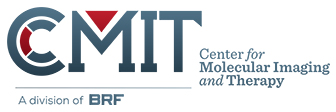By Pradeep K. Garg, PhD
Executive Director, Center for Molecular Imaging and Therapy
Molecular imaging is a technology that allows for non-invasive interrogation of physiological and biochemical processes in the body. Over the years, the use of Molecular Imaging is on the rise, especially towards diagnosing cancer and monitoring treatment. Molecular Imaging has a significant role to play at preclinical and translational stages in the field of Molecular Medicine. Molecular Imaging tools include Magnetic Resonance Imaging (MRI), Magnetic Resonance spectroscopy (MRS), Computed Tomography (CT), Positron Emission Tomography (PET), Ultrasound (US), and Optical Imaging among many more. While CT and MRI remains as first-line tools for diagnosing ailments by the clinicians, preclinical and clinical use of Positron Emission Tomography (PET) is steadily rising. Newer PET probes are being developed and being evaluated for their effectiveness in patient care and disease management. While this technology has tremendously benefitted the preclinical research, it has also become one of the indispensable tools in the clinic. In addition, now PET is proven to be quite helpful in expediting the drug development and discovery efforts. Over the last two decade, a significant progress is made towards expanding the role of Molecular Imaging. It plays significant role in Oncology, Neurology, ageing, drug abuse, and cardiac applications. With increased acceptance of this modality in the clinics around the world, there is a growing interest in utilizing PET to target biological systems and to assess the outcome of certain treatments in patients.
One of the early successes in PET application came from the development of F-18 labeled fluorodeoxyglucose (F-18 FDG), a sugar molecule that was labeled with a short half-life PET radionuclide Fluorine-18. This molecule phosphorylates and subsequently traps inside the cells and thus provides a measure of glucose utilization in a given tissue. Since this principle applies to many cellular processes, the role of FDG continued to grow beyond its original oncology applications. Encouraged from initial successes with F-18 FDG, newer PET probes were developed with primary focus to target a wide array of biochemical and physiological processes. Some of the noteworthy focus areas include targeting cellular apoptosis, angiogenesis, Alzheimer’s disease, dementia, moment disorders, various receptors in the brain, and numerous other biochemical pathways.
Some of the extensively explored PET probes include F-18 Fluorothymidine (F-18 FLT), F-18 Fluoromisonidazole (F-18 MISO), F-18 Amyvid (F-18 AV-45), F-18 FallyPride, C-11 Nicotine, C-11 Raclopride, O-15 Water and scores of other probes. For example, F-18 FLT was developed as a thymidine analogue to provide a measure of thymidine uptake in tissues. This probe has been proven as a useful biomarker for assessing cell proliferation. Similarly, F-18 F-MISO was developed to assess tissue oxygenation status and has found its place in preclinical and clinical studies as tissue hypoxia marker. O-15 water has been applied to gather information on tissue blood flow. Dopaminergic systems are targeted using probes such as F-18 FallyPride and C-11 Raclopride. Several F-18 fluorobenzamides have been developed recently to target melanoma. Role of F-18 labeled testosterone derivatives is being explored to selectively target androgen receptors. These probes have shown clinical potential to target prostate cancer. Similarly radio-labeled PSMA derivatives also show significant clinical potential to target prostate cancer.
While this imaging modality is perceived as expensive and at times technically challenging, the benefit from adopting such tools could outweigh challenges. With the backing from a large supporting literature on the usefulness of Molecular Imaging, it is prudent to engage this technology into more basic science research and in to interrogate molecular medicine paradigm. It is my hope that researchers would more aggressively incorporate Molecular Imaging techniques in their Molecular Medicine research and applications.

